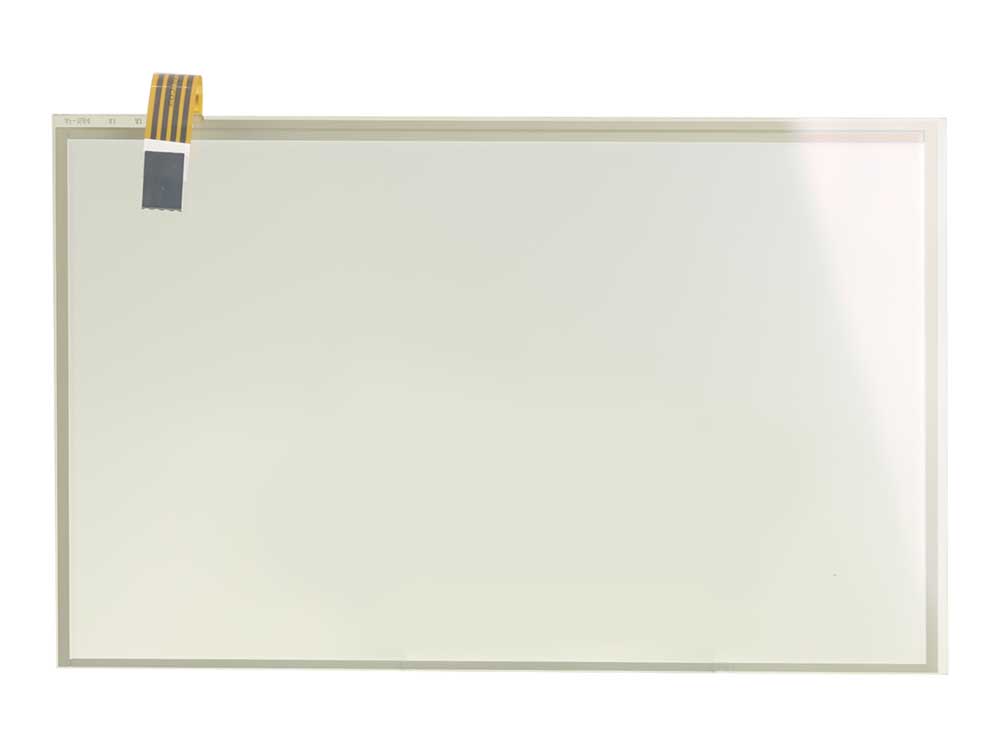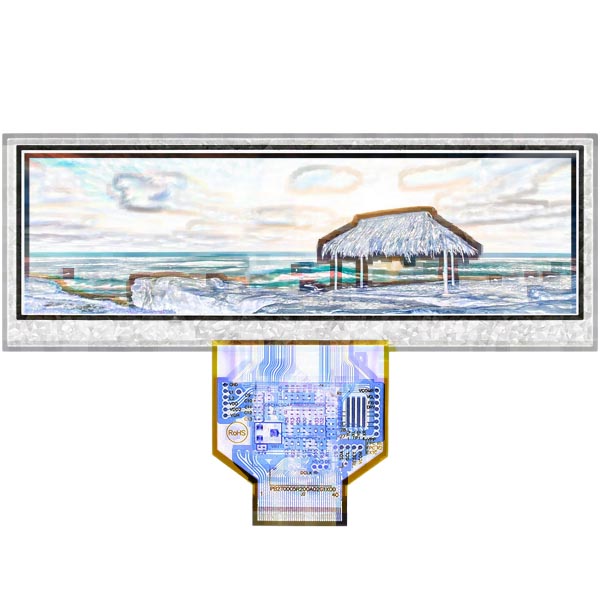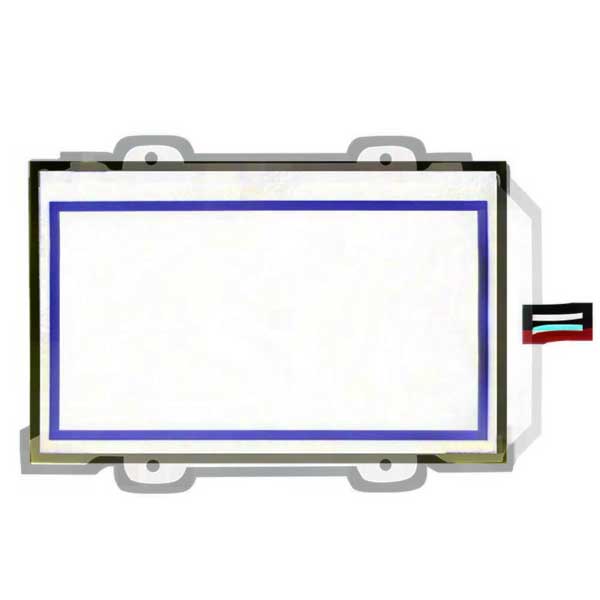The protection film is a crucial component when it comes to protecting touch screens from scratches, cracks, and other forms of damage. It’s a transparent film that covers the surface of your device, providing a barrier between it and the outside world. Whether you’re using a smartphone, tablet, or another device with a touch screen, the protection film is an essential element that ensures your device stays looking new and functioning well for as long as possible.
In this article, we’ll dive into the world of protection film and answer some common questions you might have. What exactly is protection film? How does it work? What are the different types of protection film available? These are just a few of the questions we’ll answer in the following pages.
We’ll start by looking at the different types of protection films and how they’re constructed. From single-layer to multi-layer, from plastic to tempered glass. We’ll explore the different options available to you. And what each type of film offers in terms of protection and durability.
We’ll also look at the different ways protection film is applied to touch screens. From self-applied screen protectors to professionally installed solutions, we’ll explore the different options available and the benefits of each.
Finally, we’ll look at the benefits of using protection film on your touch screen. From protecting your device from damage to preserving its value, the protection film is an investment that will pay off in the long run. Do you know a film is an essential component that you won’t want to be without? Whether you’re looking to keep your touch screen in pristine condition or want to extend its life, protection.
So, whether you’re a seasoned tech enthusiast or new to the world of touchscreen devices, this article is for you. Get ready to learn about the benefits of protection film, the different types available, and why it’s an essential component for your touch screen device.
What is a protection film and why do you need one?
Are you tired of seeing scratches, smudges, and cracks on your touchscreen? Look no further than a protection film. This transparent film acts as a barrier between your device and the outside world, keeping your screen looking brand new for as long as possible. But what exactly is a protection film, and why do you need one?
Simply put, a protection film is a thin, transparent layer of material that is applied to the surface of a touchscreen device. It’s designed to protect the screen from scratches, cracks, and other types of damage that can occur in day-to-day use. This film is usually made of either plastic or tempered glass. It is available in different types and designs, each offering varying levels of protection and durability.
The different types of protection films include single-layer, multi-layer, and tempered glass. Single-layer films are the most basic type and offer minimal protection against scratches and minor impacts. Multi-layer films, on the other hand, are made up of multiple layers of materials. These provide more protection against heavier impacts and scratches. Tempered glass protection films are the most durable and can withstand heavy impacts and scratches. It makes them the best option for those looking for maximum protection.
When it comes to application, protection films can be self-applied using screen protectors or installed. Self-applied screen protectors are the most common type and can be easily applied at home. Professionally installed protection films are typically more expensive but offer a higher level of precision and a better fit.
Now, you may be wondering, “Why do I need a protection film?” Well, protection films offer a multitude of benefits for your touchscreen device. Firstly, they protect your screen from scratches, cracks, and other types of damage that can occur from daily use. This, in turn, can help to extend the life of your device and maintain its resale value.
Additionally, protection films can improve the overall functionality of your touchscreen device. A scratched or cracked screen can interfere with touch sensitivity and make it difficult to use the device properly. A protection film ensures that the touch screen is responsive and fully functional.
In closing, a protection film is an essential component that every touch screen device owner should invest in. It offers a simple and effective solution to protecting your device from damage. So it maintains its value and improves its functionality. With the different types and designs available, there is a protection film to suit every need and budget. So, what are you waiting for? Protect your device today with a high-quality protection film.
Types of protection films for different devices
So, we now know that protection films are essential for keeping our touchscreen devices looking brand new for as long as possible. But did you know that different types of protection films are available for different devices? In this article, we’ll explore the various types of protection films for different devices.
Smartphones
Smartphones are one of the most used devices with touch screens. As such, they need a high level of protection. The most popular type of protection film for smartphones is, of course, tempered glass. Tempered glass is durable. It provides the greatest protection against scratches, cracks, and other types of damage. The thickness of tempered glass protection films ranges from 0.3mm to 0.5mm. Additionally, some tempered glass protection films come with an oleophobic coating. So it helps to repel fingerprints and smudges.
Tablets
Tablets are larger touch screen devices that are just a different type of protection film. Tempered glass protection films are also available for tablets. However, due to the larger size of tablets, multi-layer protection films are also commonly used. Multi-layer protection films are made up of multiple layers of materials. These materials provide more protection against heavier impacts and scratches.
Laptops
Laptops are other devices that require a specific type of protection film. Since laptops are often moved around and transported, they require a protection film that is both durable and flexible. Polyurethane (PU) protection films are the best option for laptops. PU protection films are flexible, and durable, and provide a high level of protection against scratches and other types of damage. They also come in a variety of colors and textures, allowing you to customize your laptop’s appearance.
Smartwatches
Smartwatches are a relatively new type of touchscreen device that has become increasingly popular in recent years. Due to their small size and constant use, they require a specialized type of protection film. PET (polyethylene terephthalate) protection films are the best option for smartwatches. PET protection films are thin, and flexible, and provide a high level of protection against scratches and minor impacts. They are also resistant to UV light and can withstand extreme temperatures.
Gaming devices
Gaming devices are often used for extended periods, making them more susceptible to scratches and other types of damage. As such, they require a high level of protection. For gaming devices, tempered glass protection films are the best option. They provide the largest protection. For example, against scratches, cracks, and other types of damage while maintaining the device’s touch sensitivity.
Finally, different types of protection films are available for different touchscreen devices. The most popular types of protection films include tempered glass, multi-layer, PU, PET, and more. By selecting the appropriate protection film for your device, you can ensure that it remains in pristine condition for as long as possible. So, whether you have a smartphone, tablet, laptop, smartwatch, or gaming device, be sure to invest in a high-quality protection film. It will keep your device looking and functioning like new.
How to choose the right protection film for your device
Now that we know the different types of protection films available for different devices, the question arises: how do we choose the right protection film for our device? Here are some key factors to consider when selecting the right protection film:
Device type
As we discussed earlier, different types of protection films are available for different devices. It’s essential to choose a protection film that is designed for your device. For example, a protection film designed for a smartphone may not be suitable for a tablet or a laptop. Make sure to check the compatibility of the protection film with your device before making a sale.
Level of protection
The level of protection needed for your device may vary depending on how you use it. If you’re someone who frequently drops their device, then you may need a protection film that offers maximum protection against heavy impacts and scratches. But, if you only use your device for light browsing and texting, a protection film with minimal protection may be enough. Consider your usage patterns when selecting the level of protection for your device.
Ease of application
The application process of protection films can vary. Some protection films are self-applied and can be easily installed at home. Other protection films require professional installation. It’s essential to consider the ease of application before making a purchase. If you’re someone who is not tech-savvy, then a self-applied protection film may not be the best option for you.
Touch sensitivity
One of the most important factors to consider when selecting a protection film is touch sensitivity. The protection film should not interfere with the device’s touch sensitivity. When selecting a protection film, make sure to check the touch sensitivity rating. Some protection films are specially designed to maintain the device’s touch sensitivity, while others may reduce it.
Price
Protection films come at different price points. While it’s tempting to go for a cheaper option, it’s important to consider the quality of the protection film. A cheaper protection film may not offer the same level of protection as a higher-priced one. It’s essential to balance quality and price when making a purchase.
To choose the right protection film for your device, consider the type of device, level of protection needed, ease of application, touch sensitivity, and price. By doing so, you can choose a protection film that meets your specific needs and provides the necessary protection for your device. Keep in mind that investing in a high-quality protection film is an investment in the longevity and functionality of your device.
The benefits of using a protection film
Using a protection film for your touchscreen device has numerous benefits that can help you extend the life of your device and improve its functionality. Here are some of the top benefits of using a protection film:
Protection against scratches and cracks
The most obvious benefit of using a protection film is that it protects your device from scratches, cracks, and other types of damage that can occur in day-to-day use. Even a single scratch or crack can detract from the appearance of your device and decrease its resale value. A protection film ensures that your device remains in pristine condition, preserving its value and appearance.
Improves touch sensitivity
A protection film can improve the touch sensitivity of your device by providing a smoother surface for your fingers to glide over. When your device’s screen is scratched, it can interfere with touch sensitivity, making it difficult to use. A protection film ensures that your device remains responsive and fully functional.
Resists fingerprints and smudges
Many protection films are designed with a special coating that helps to repel fingerprints and smudges. This means that your device remains clean and clear, even after extended use. It’s a simple way to keep your device looking and functioning like new.
Easy to apply and remove
Protection films are easy to apply and remove, making them a convenient option for device owners. Self-applied protection films can be easily installed at home, while professionally installed films are typically quick and easy to install.
Cost-effective
Using a protection film is a cost-effective way to protect your device from scratches, cracks, and other types of damage. Compared to the cost of repairing a damaged screen or replacing a device, a protection film is a small investment that can save you money in the long run.
Preserves resale value
When you decide to sell your device, a protection film can help to preserve its resale value. A device with a pristine screen is much more appealing to buyers than one with scratches and cracks. By using a protection film, you can ensure that your device remains in top condition and maintains its value.
To sum up, the benefits of using a protection film for your touchscreen device are numerous. Do you agree that a protection film is an investment that will pay off in the long run? It offers protection against scratches. It does the same against cracks. In addition, protection film improves touch sensitivity. And, it makes devices more resistant to fingerprints and smudges. It’s a cost-effective way to preserve the value and appearance of your device, and ensure that it remains fully functional. So, whether you’re a seasoned tech enthusiast or new to the world of touchscreen devices, investing in a high-quality protection film is a simple and effective way to protect your device and extend its lifespan.
Expert tips for installing a protection film
Installing a protection film on your touchscreen device can be an effective way to protect it from scratches and other types of damage. While some protection films can be easily installed at home, it’s important to follow expert tips to ensure that the film is properly installed. Here are some expert tips for installing a protection film:
Clean your device
Before applying a protection film, it’s important to clean your device thoroughly. Any dirt or dust particles on the surface of your device can cause the film to bubble or not stick properly. Use a microfiber cloth to wipe down your device and ensure that it’s free of any debris.
Use a dust remover
Even after cleaning your device, there may still be small particles or dust that can affect the installation of the protection film. To remove any remaining debris, use a dust remover to ensure that the surface is completely clean.
Apply the protection film in a dust-free environment
To prevent any particles from settling on your device during installation, it’s best to apply the protection film in a dust-free environment. This can be a clean room or an area with minimal air movement.
Align the film carefully
When applying the protection film, it’s important to align it carefully with the device’s screen. Make sure that the film is positioned correctly and use the device’s edges as a guide to ensure that it’s centered.
Apply pressure evenly
To ensure that the protection film adheres properly to your device, apply pressure evenly. Use a credit card or similar flat object to smooth out any air bubbles or creases in the film. Be careful not to apply too much pressure, which can cause the film to stretch or tear.
Let the film settle
After applying the protection film, let it settle for a few hours before using your device. This will allow the film to adhere properly and ensure that it’s completely settled before use.
Seek professional installation
If you’re unsure about installing a protection film yourself, or if you’re having trouble with the installation process, it’s best to seek professional installation. Many retailers offer protection film installation services, which can provide a more precise and professional finish.
All in all, installing a protection film on your touchscreen device requires careful attention to detail and a few expert tips. By following these tips, you can ensure that the protection film is properly installed and that it adheres to your device for long-lasting protection. If you’re unsure about the installation process, it’s best to seek professional installation to ensure that your device is protected to the highest degree possible. Remember, investing in a high-quality protection film is an investment in the longevity and functionality of your device.
Protect your investment with the best protection film on the market
Your touchscreen device is an important investment, for sure. So it requires protection to ensure its longevity and functionality. The best way to protect your investment is by using the best protection film on the market.
When choosing a protection film for your device, it’s important to consider the level of protection it provides. You have to consider its ease of application, touch sensitivity, and price, too. However, the best protection film on the market goes beyond these factors. It tries to provide a superior level of protection and functionality for your device.
The best protection films on the market are made with high-quality materials. These materials offer superior protection against scratches, cracks, and other types of damage. They’re designed to maintain the touch sensitivity of your device. They are resistant to fingerprints and smudges, too. And they provide a clean and clear screen that’s easy to use. They’re also easy to apply and remove, making them a convenient option for device owners.
In addition to providing superior protection, the best protection films on the market offer a range of extra benefits. They can enhance the appearance of your device, providing a sleek and stylish finish that complements its design. They can also improve the functionality of your device by reducing glare and providing a more comfortable viewing experience.
References
Wang, G., Zhao, Y., Yang, F., Zhang, Y., Zhou, M., & Ji, G. (2022). Multifunctional integrated transparent film for efficient electromagnetic protection. Nano-Micro Letters, 14(1), 65.
Bae, G., Choi, G. M., Ahn, C., Kim, S. M., Kim, W., Choi, Y., … & Jeon, S. (2021). Flexible protective film: ultrahard, yet flexible hybrid nanocomposite reinforced by 3D inorganic nanoshell structures. Advanced Functional Materials, 31(18), 2010254.
Kim, S. J., Phung, T. H., Kim, S., Rahman, M. K., & Kwon, K. S. (2020). Low‐Cost Fabrication Method for Thin, Flexible, and Transparent Touch Screen Sensors. Advanced Materials Technologies, 5(9), 2000441.
Lim, Y. W., Jin, J., & Bae, B. S. (2020). Optically transparent multiscale composite films for flexible and wearable electronics. Advanced Materials, 32(35), 1907143.






